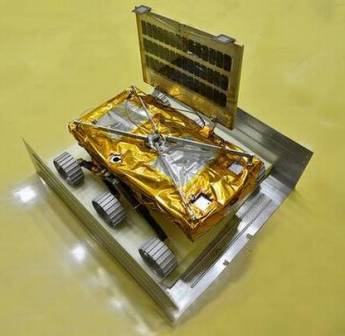India’s second moon mission Chandrayaan-2 scheduled for launch in April, would be carrying a NASA science probe.
During the lunar and planetary Science Conference held at Texas, US last week, NASA confirmed that Chandrayaan 2 will carry NASA- owned laser retroreflector arrays that will allow scientists to make precise measurements of the distance to the Moon.
Retroreflector are essentially sophisticated mirrors. Scientists on Earth can shoot them with lasers and study the light that is reflected back. The signal can help pinpoint precisely where the lander is, which scientists can use to calculate its- and the moon’s distance from earth.
Besides Chandrayaan 2, the science instruments will also be flying to the Moon abroad the Israeli lander Beresheet, due to touch down April 11

“We’re trying to populate the entire surface with as many laser reflector arrays as we can possibly get there,” said Lori Glaze, acting director of the Planetary Science Division of NASA’s Science Mission Directorate, as per the local reports.
The 3,890 kg Chandrayaan -2 spacecraft, to be launched onboard the Geosynchronous Satellite Launch Vehicle (GSLV) Mk-3, will orbit around the moon to study its conditions and collect data of its topography, mineralogy and exosphere.
The 800 Crore Chandrayaan-2 mission comes a decade after the maiden mission Chandrayaan-1 was launched on 22, 2008 from India’s only spaceport at Sriharkota in Andhra Pradesh.
The lander has been named Vikram as a tribute of India’s space programme and former ISRO chairman (1963-71) Vikram Sarabhai.
When Chandrayaan2’s rover lands on the moon, India will become the fifth country in the world o achieve the feat after Soviet Union in 1969, US in 1969, China in December 2013 and Israel in 2019

